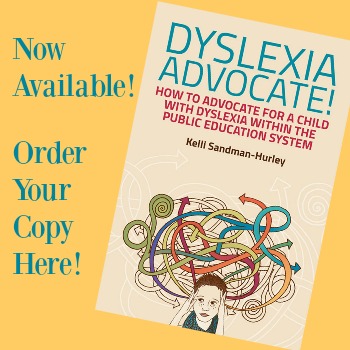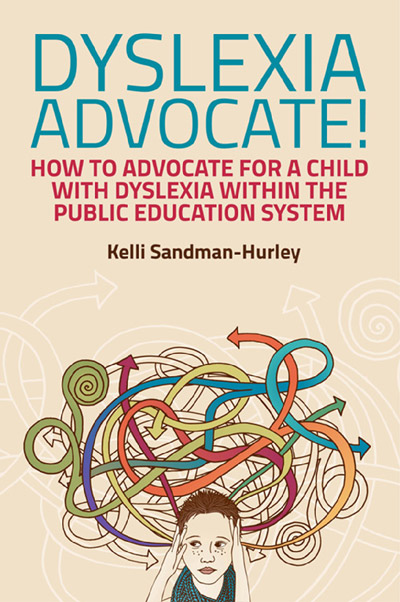When people ask me why I am so interested in dyslexia, I often respond by telling the story about an adult literacy student named Lynford. While Lynford does play a huge role in my decision to work in literacy, there is an experience I had as a child that I think primed me to do something to help adults long before I ever thought about dyslexia. When I was in 4th, 5th and 6th grade I moved from Columbus, Ohio to Costa Mesa, CA where I lived on the grounds of Fairview State Hospital (which was later renamed Fairview Developmental Center). I don’t often try to explain what that experience was like because I don’t think words could ever adequately explain it, but I am going to try here and then circle back to what it has to do with dyslexia.
The street we lived on had about 6 houses on one side and 3 on the other. At the time it was the only housing on the grounds. The 6 houses were occupied by other hospital employees. We lived there because my dad was doing research and had a lab in the hospital. I was lucky that there were about 8 other kids on my street and we all went to the same schools, so we had each other to relate to in a situation that was totally unrelatable to other kids. I vividly remember that many of the kids at my school were not allowed to come to my house because of the ‘clients’ that lived across the street. The ‘clients’ were the residents of the three houses (group homes) directly across the street from mine. There were some memorable adults who lived there. One man, Robert, would scream joyfully every morning and we would refer to him as the human alarm clock. Another, Andrew, would put his hands in his pockets and sway back and forth while answering every question the same way. As kids, we instinctively knew that these were humans who deserved respect, so while we interacted with them we did it respectfully. One of my favorite clients, was a client named Freddie. He was an African-American guy who wore sunglasses and incessantly tapped his comb between his fingers. His head was always slightly tilted upward. He was actually pretty cool and higher functioning than most of the clients at Fairview. He used to play basketball with me in our driveway and one time brought me some sunglasses that I had accidentally left somewhere else on the grounds. He was a good guy.
About 100 feet from our street was the rest of the grounds of the hospital where there was an actual hospital building, our parents all had offices in this building, and a canteen in the basement, where we spent a lot of our time eating those gross chips called Munchos. The hospital building housed the most delayed clients. They were usually bed-ridden, unable to communicate and take care take of their personal needs. We often saw them in the elevators with their caretakers or being taken on ‘walks’ outside the building. Some clients had heads the width of the mattress and lived in their beds their entire lives. Every single time I saw them, which was every day, I wondered if they realized how delayed they were and if they were actually happy to be alive in the state they were in. Were they somehow trapped in their bodies? Those are big questions for a 4th grader. But the Canteen was a fun place for us. It was big and had tables and vending machines. The more mobile clients would be escorted down there to get some snacks and hang out. We usually travelled in groups of about 2-3 kids at time and would often have interesting conversations with the clients at the canteen and helped them get their coffee.
Outside of the hospital building were multiple buildings that house many many more clients. In these buildings there were some clients who would suck their fingers to the bone, bang their heads on the walls and floors, throw feces at the window, openly masterbate, yell, scream, hum, murmur, repeat the same phrase over and over and so on. And there were clients who were delightful and fun to talk to. One client I remember vividly would say apple pie, pumpkin pie, blueberry pie and then drop his pants for us. But it wasn’t funny to us, it was sad and we knew it. Another gentleman, who was so ridiculously nice, had a skull that was severely deformed, yet he pressed on.
There was also a small petting zoo and a pool on the grounds. I only remember going in the pool a handful of times because I was not convinced it was super clean, but I did love the petting zoo. We were often there alone without clients and had the run of the place while riding our bikes around. Next to that was the client cafeteria and the room were they would ‘work’. This usually meant they were stuffing envelopes. But wherever we went we were greeted with smiles, hugs and affection from the clients and we returned it.
I once had a birthday party where only a few friends showed up. I learned later that my friend Katie’s mom pulled into Fairview and then turned around and said she was not allowed to come to my house. It made me sad at times, sure, it was hard to be the kid who lived at Fairview, so I know a little something about being the odd kid out. And there is no doubt we were pretty isolated by our situation and there is no doubt that someone reading this may think my parents were wrong for having us live there, but I say, on the contrary. Where else could I live where I have an experience that changes who I am forever, in a good way? Where else could I live where I see the adults suffering, whether they realize or not, and not have that affect me forever? It taught me compassion at the deepest level. It made me brave and unafraid of new and different people and places. It paved the way for me to help those who struggle.
I often tell the story of my first dyslexic student, Lynford, as the impetus for my career in the dyslexia community and there is no doubt he had a profound impact on me. However, the impact started when I was 10 and I am so glad to have finally found the words to describe, an describable experience, that led to my need to help.





